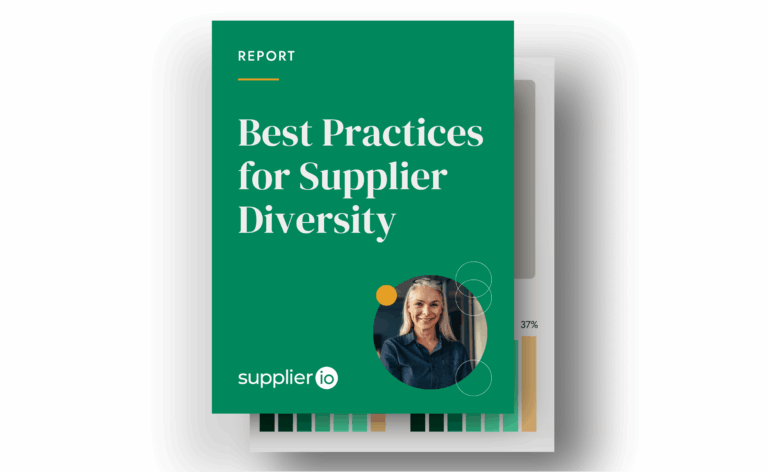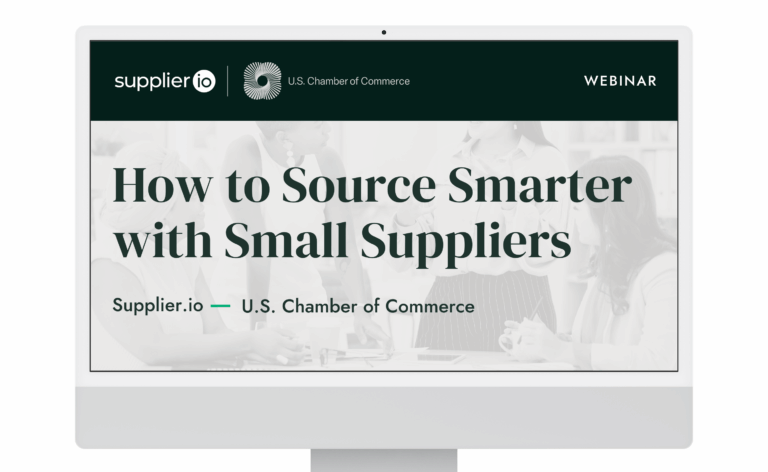Advocating for Supplier Diversity in the Face of Economic Uncertainty
Is procurement able to satisfy urgent bottom line requirements while also working towards visionary pursuits like supplier diversity and sustainability?

These conditions put procurement teams in a tough position. On the one hand, this is their moment to shine. As guardians of the bottom line, procurement can put their negotiation and strategy skills to especially good use. But is that what procurement wants to be? The guardian of the bottom line?
I believe most procurement professionals and teams aspire to more. Savings is just one measure of value. Resilience, innovation, and collaboration are corporate objectives as well, and procurement has the ability to impact them all. The question is whether procurement is able to satisfy urgent bottom line requirements while also working towards visionary pursuits like supplier diversity and sustainability.
As omnipresent as the ESG movement is in conversations, it may be falling off the radar screen from an execution standpoint. The 2023 CPO Key Issues Study by The Hackett Group found that embedding “responsible procurement” was priority number ten, with supplier diversity specifically falling just outside the top ten, in eleventh place.
Companies want to be financially successful despite today’s macroeconomic challenges, but how can procurement balance that with the ongoing mission to increase diverse participation in the supply base?
Procurement can keep the company’s supplier diversity program in the spotlight by:
- Maintaining Visibility. Procurement doesn’t usually get to make decisions about which suppliers receive contracts. That said, procurement’s data and insights are especially valuable in the decision making process. Keeping the supplier diversity vision and commitments front and center by establishing baselines and tracking progress is a valuable activity, one that positions supplier diversity for growth at the earliest opportunity.
- Expanding into Tier 2. If the company isn’t increasing their spend, or isn’t open to onboarding new suppliers because of their economically-driven risk position, it is still possible to expand their understanding of the total supplier diversity footprint. Tier 2 supplier diversity leverages the spending of the company’s immediate suppliers (Tier 1) and captures their impact as well. Expanding the diversity impact baseline to the second tier of the supply chain positions the company for larger scale impact and growth going forward.
- Remembering the Workforce. Although workforce diversity initiatives are often managed by procurement’s colleagues in Human Resources, the two programs have solid philosophical alignment. Both workforce diversity and supplier diversity strive to increase inclusion. Contingent workers, including third party service providers, contractors, and freelancers, can all be included in diversity programs, with procurement and HR working collaboratively to capture data and establish goals.
Beyond what procurement can do to preserve and expand upon supplier diversity gains is the question of WHY they should do so.
Some of the reasons are straightforward:
- Government contracts often mandate supplier diversity thresholds. For instance, the recently enacted CHIPS Act requires all companies looking to receive funding to have a supplier diversity program
- In many cases, diverse-owned businesses are smaller organizations, and the loss of one contract or a reduction in anticipated demand can have a detrimental impact, not just on that company, but on the community they support
- Commitments to investors and customers should not be walked back without serious thought, nor is it a safe idea to hope no one will notice when a program launched with much enthusiasm falls by the wayside for lack of follow through
One of the most common challenges procurement professionals share is that they can’t find certified diversity suppliers that provide the products and services they are looking to purchase. Industries and companies take time to mature. Hitting a ‘dry spell’ because of a challenging economy can set diverse-owned businesses back years… making it take that much longer for everyone to achieve the vision of a more representative supply chain.
Last but not least, procurement should see the parallel efforts of cost efficiency and supplier diversity as an opportunity to build a new first-mover’s advantage. While some supplier diversity programs have been in place for decades, others were only launched in the last few years. By making the choice to continue investing in supplier diversity despite economic challenges, procurement can take small steps now that lead to giant steps and greater impact when conditions change.




